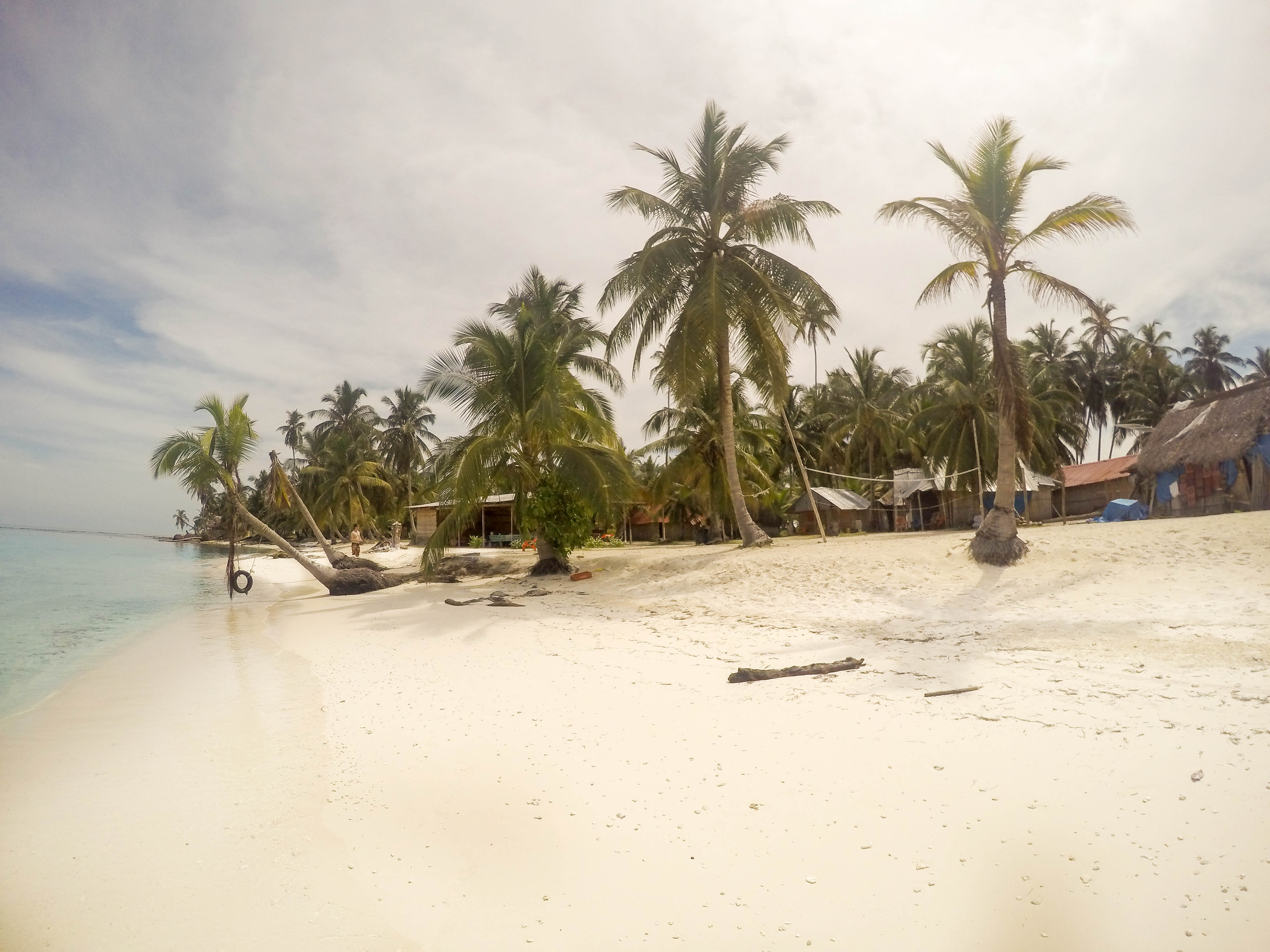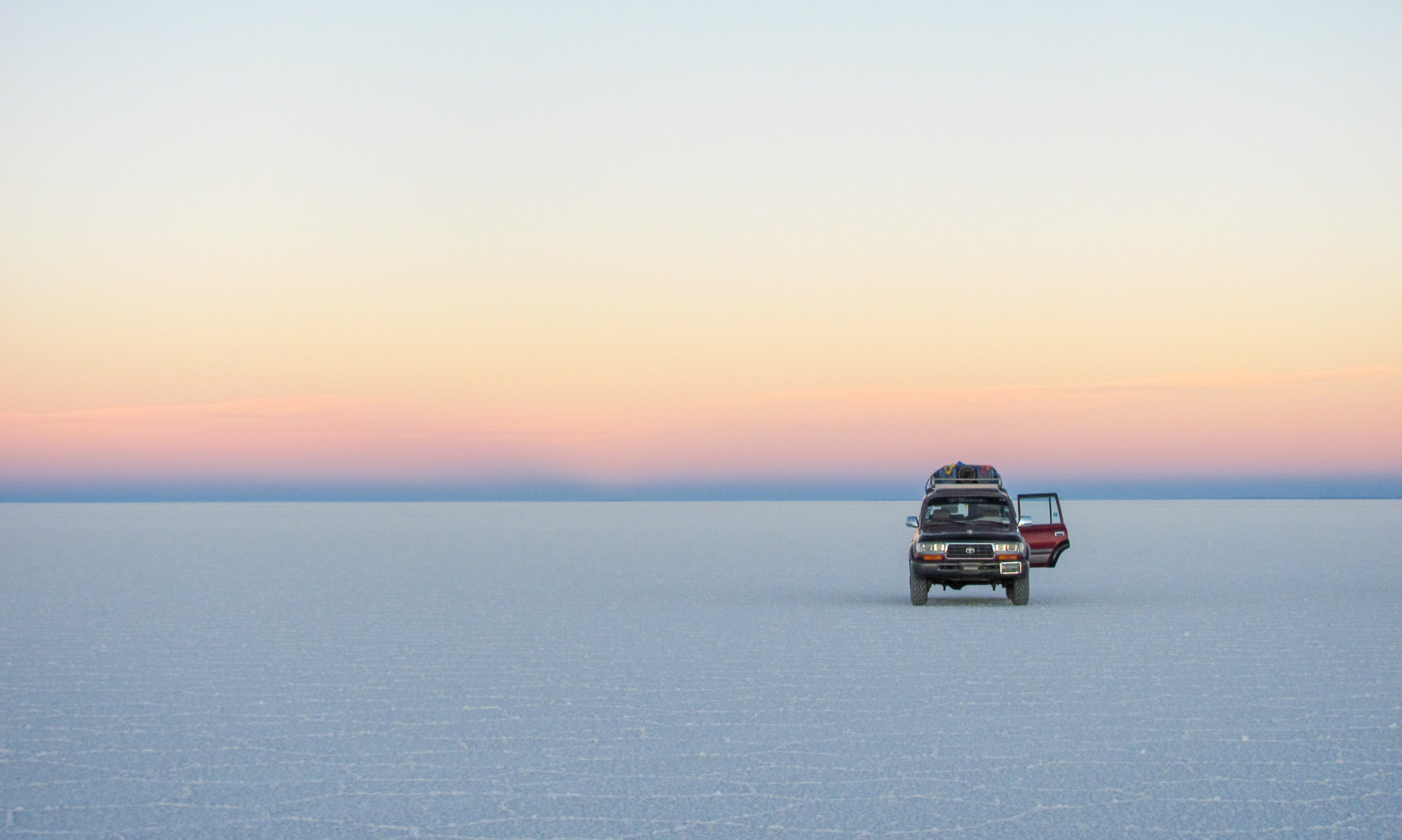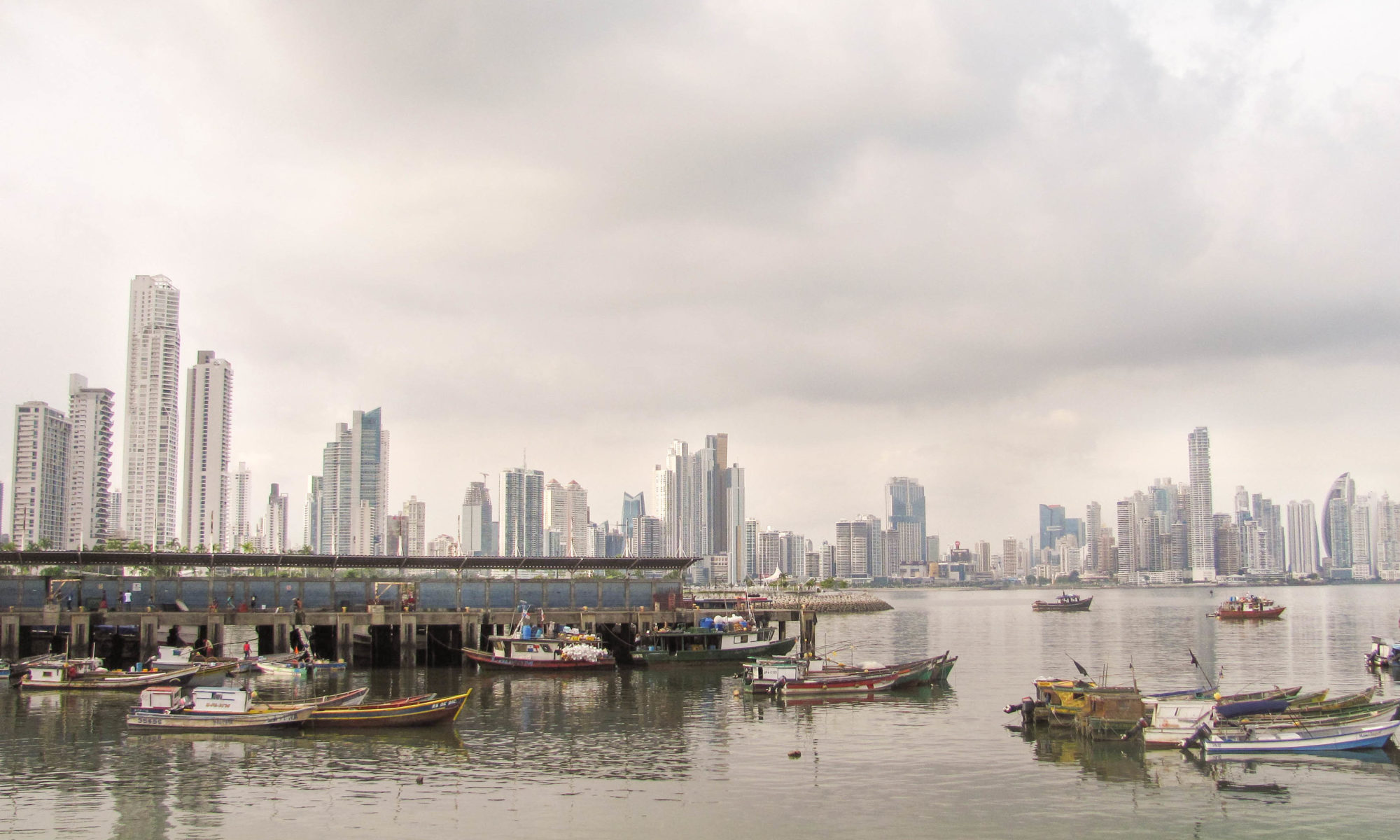Panama lies at the heart of the Carribean, but its capital Panama City oozes everything but Carribean vibes. High skyscrapers are lined along a beach-less coast. Panama City is definitely not the most interesting place to visit. But with it being the gateway to Panama, a visit is hard to avoid when you have set your mind to exploring the country. Better read this guide to ensure you’ll make the most out of it!
– Practical Information –
When
Panama-City roughly follows the same climate as the rest of the country. The dry-season stretches from the end of December until the end of April. Think sunny days and little rain. The other months are considered to be the rainy season (April – December) but being located at the Pacific Coast – contrary to the Panamanian highlands – the rainy season still receives plenty of sunshine albeit in between (heavy) showers.
In, Out & around
Since the Darién Gap (connecting Panama to Colombia in the south) is largely considered unsafe to travel through (due to the presence of drug-traffickers, guerillas, and paramilitaries) most travelers enter Panama either from its other neighbor Costa Rica in the North or by plane. All long-haul buses arrive at the Allbrook Bus Terminal, while Tocumen International Airport is Panama’s largest air hub.
Allbrook Bus Terminal
Allbrook is the main bus-terminal of Panama City and virtually all busses enter the city using this stop. It is located next to the Allbrook Mall, Latin-America’s largest shopping mall which also hosts a Cineplex and a large food court. From Allbrook you can take buses to all major destinations in the country as well as to all major destinations in the city. It might be hard to find where the buses leave exactly so ask around and be patient – buses rarely leave on time. Ignore taxi-drivers telling you that a certain bus does not run, they are just trying to get you in their cabs.
Tocumen International Airport
Tocumen International Airport receives (direct) flights to and from all over the world. Getting to the airport is easiest by taxi but the 15-kilometer ride can be quite costly. Cheaper is taking the bus from the airport to Multicentro Shopping Center (for Marbella) or Casco Viejo (for the old center) and, depending on your final destination, a taxi from there onwards (about 2 – 3USD ). Normal busses don’t run to Casco Viejo directly but you might find a ‘chicken bus’ that does. There are buses from the Multicentro Shopping Center to Casco Viejo.
To get to the bus you simply have to walk from the airport following the signs to the busses. There are multiple bus-stops and it can be quite confusing which one to take. Even though the bus is slightly cheaper, if you don’t feel like waiting it is fastest to take a ‘chicken-bus’ for 1 USD. Tell the driver if it is stopping at the Multicentro Shopping Center. He will tell you when to get off.
Getting Around in Panama City
The best way to get around in Panama City is by taking the public bus. They are clean, have working air conditioning and are dirt cheap. To take the public buses you need a bus-pass which can be purchased at the Allbrook Bus Terminal for 2 USD (deposit). Next, you need to charge it with a few dollars. A ride only costs 25 cents so I only charged my card with 3 USD and was able to get around town for 3 days. For your first ride to Allbrook (to get your pass) simply ask someone to ‘bleep you in’ as this is very common practice. It is good manners to pay them the fee in cash but they will not expect it. For some reason, people really don’t mind paying for each others bus rides in Panama.:)
If you can’t find the right bus or you’re in a hurry you can also opt for a ‘chicken bus’. These are either minivans that seat many more then they were designed for or old converted American school buses. They are privately run and drive a certain route continuously. They cost 1 USD a ride and the drivers are always in a hurry. It is very common for the driver to take off while your halfway in, which makes for quite the experience. The name? People tend to take all sorts of good and animals on these buses. Yep, that includes chickens.
Lastly, there are taxies all around town. Be sure they run the meter and take a yellow cab. Some fancy cabs mostly cater for the luxury hotels in the financial district and cost 3x the normal fare. Taxies aren’t cheap in Panama but they are not crazily expensive either. A short ride (few kilometers) will set you back about 3 USD.
Budget
If you were looking for a cheap destination you’ll be disappointed: while not crazy expensive Panama is certainly not a cheap country to travel. And amongst the most expensive places in Panama is, you guessed it, Panama City. Expect to pay 12-15 USD for a dorm bed, and the same for a normal restaurant meal. It pays to cook here (groceries are priced similarly to the U.S. or Europe). Cheap eats are green mangos with chili salt (1 USD) and Ceviche (3 USD for a bowl at the Mercado Mariscos which makes for a fine lunch). Buses are only 25 cents per ride and a 10km taxi-ride about 10 USD.
– What to visit –
Neighbourhoods
Panama has a lot of neighborhoods but after a bit of research and my stay there, I can conclude that for most travelers there are only two that are worth considering staying in. Casco Viejo, the old center of Panama-City, and Marbella, the place where all the high-rise is (you know, from the pictures.).
Casco Viejo

Less then 10 years ago Casco Viejo was a dodgy place. Gang ruled and criminal flourished. Gang-violence and shoot-outs were part of the everyday life. Not a place you want to go as a traveler. A few years back, however, the Panamanian government decided it was time to clean up the area – and with success! The old colonial buildings are now being restored and hip bars and eateries are dotted around the neighborhood.
Casco Viejo is the old Panama. When the U.S. took over the construction of the Panama-canal in 1904 from the French the city started to boom. Fortunately, they decided to build up the new city a few kilometers from the old city and by doing so the old historic center got saved. With all the recent restoration works the area is slowly but surely getting back to its old self. It’s a nice area to walk around for a few hours but compared to other colonial cities in Latin and South-America it is not all that interesting. Free guided walking tours organized by ‘La Oficina del Casco Antiguo‘ start at the Plaza de Cathedral on Friday’s and Saturday’s in the morning.
Marbella

Marbella is the area at the other side of the Cinta Costera walkway. The place where all the big skyscrapers are huddled together. Both the financial district and the place for the big fancy luxury hotels. It got great clubs and bars (but mostly a bit on the fancy side) so if you fancy clubbing this is your hangout. Even if you are not keen on spending too much money and you are not interested in shopping malls etc. it is cool to walk around between these massive buildings and image tossing millions around in a nicely thought-out Ponzi-scheme. Let’s hope you don’t end up in the Panama Papers.;)
Cinta Costera

Cinta Costera is the large green sea-side stretch that connects Marbella to Casco Viejo. It has got a wide pedestrian-only boulevard, parks, tennis fields and outdoor gym equipment that is free to use. Cinta Costera is not only nice to walk around in but it is also quite necessary.
The neighborhood connecting Marbella to Casco Viejo at the other side of the Avenida Balboa is a true ghetto. Think stripped concrete flats where people barbeque chicken in old oil-drums on their balconies. I accidentally wandered into this area while I was looking for the Mercado Mariscos and got directions to a hardware store for farmers instead (Mercado Campesinos). After being shouted at by the fifth random bypasser I started to feel really uncomfortable. Not daring to have my cell phone out of my pocket for too long (a few guys in tank tops were already walking alongside me trying to stir up a conversation in a rather aggressive way) I winged it by just walking towards the skyscrapers and hoping for the best. Fortunately, I got out in one piece.
Ancon Hill
Ancon Hill is a look-out point a few kilometers from the city center. You’ll get there by taxi for about 5 USD. It is green, tucans are flying around and if you’re lucky you might spot a sloth hanging in a tree. At the one side you have the city-view and at the other the Canal. If you are penny-pinching you can just walk up the hill itself, but without an offline map, it is not easy to find. Take into account that the sweltering heat combined with a pretty steep climb takes a lot out of you. BRING WATER.
Mercado Mariscos
The fish-market. If you actually want to see the catch of the day or buy fish too, later on, prepare at your accommodation for dinner you should come early. Cheapest (unprepared) seafood I’ve seen on offer in Latin-America. The best Ceviche (raw fish in lime juice with cilantro) in town is also served here day-round. For 4 USD you got a big bowl, so visit on an empty stomach.
Panama Canal

This is one sight you can’t skip. The whole city is basically built on the profits from the canal (the average ship has to pay $200.000,– to pass through) and the passway has an interesting museum to visit. If you arrive late in the afternoon you’ll see the ships passing through from the museum’s elevated terraces. The entrance is, with $15.00, quite steep considering you’ll probably only need about an hour or two to see everything there is.
Getting there is cheapest by bus. You’ll first have to go to the Allbrook Terminal and from there you can take a direct bus to the canal. I’ll write a more extensive guide on visiting the Canal later – and put in a link here. Of course, taxi’s are also around.
San Blas Islands

Often dubbed the most beautiful bounty islands in the world the San Blas Islands are spectacular. Azure-blue clear sees are dotted with hundreds of tiny tropical islands that only pop a few inches above sea-level, surrounded by brightly colored coral reefs. The whole island-group is privately owned by the native tribe called the ‘Guna’ and they take great care of the archipelago. The islands are largely untouched by mass-tourism: there are no hotels and no restaurants on any of the islands. The only way to spend the night in the San Blas region is by staying at one of the guesthouses run by the families that live there. A stay includes breakfast, lunch, and dinner which is always the catch of the day.
Since there is virtually no light-pollution in the region the starry night sky is beautiful and combined with the bioluminescence in the sea the views at night are just insane. If you are tempted to go for a nightly swim (as I was) make sure you wear water shoes as there are urchins and scorpion-fish lurking around – and medical help here is not around the corner. I found out the hard way and walked around with sea-urchin needles in my big toe for a few weeks. Also, the sea at night is filled with tiny jellyfish. Not harmful but the sting leaves a tinkling feeling on your skin that lasts for about an hour.
The islands are only a few hours drive from the city and then about an hour by boat. Take into account that the islands are very remote – you’re likely to be the only visitor on the island. Unless you thrive on being isolated visiting for a full week on your own might not be the best idea in the world.
For more info, you should read my article on visiting the San Blas islands.
– Food & Accommodation Recommendations –
Eating
Casco Viejo has many hip eateries and restaurants but I have not encountered one that really stood out enough to mention here. One of the best places to have lunch, however, is the Mercado Mariscos – cheap seafood which is dayfresh.
Drinking
Try Casa Casco or Tantalo Rooftop Bar for a good drink with some nice tunes in Casco Viejo. Also the party’s at Luna’s Castle (hostel) can be quite lively. Another cool place: Relic Bar. The indoor space can get a bit crowded (but very atmospheric) but the leafty outdoor garden makes more then enough up for it.
Sleeping
Marbella sports all the big chain hotels (if you’re on a big budget – I heard the Bristol hotel is quite fantastic) but also has a few good hostels for a smaller budget. I stayed at El Machico which is a great place. The staff is super friendly and they have a nice swimming pool to cool off. The aircon in the rooms is quite good but they turn it off during the day to save energy. Also has a great travel-agency and free banana-pancakes for breakfast:). If you are looking for a party hostel in the heart of Casco Viejo, opt for Luna’s Castle. Great social place in an old colonial building. It is not the cleanest place ever and lacks a swimming pool which for 14$ a night (in a dorm) is a pity.


